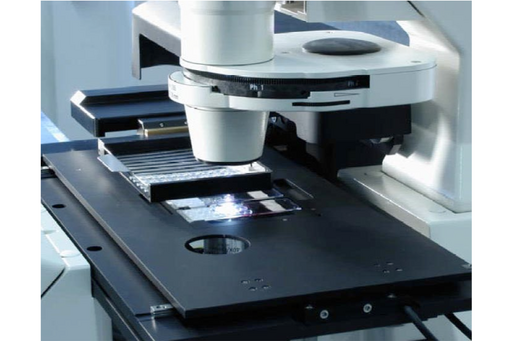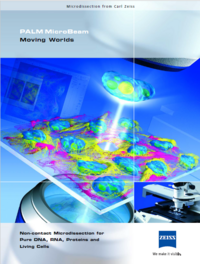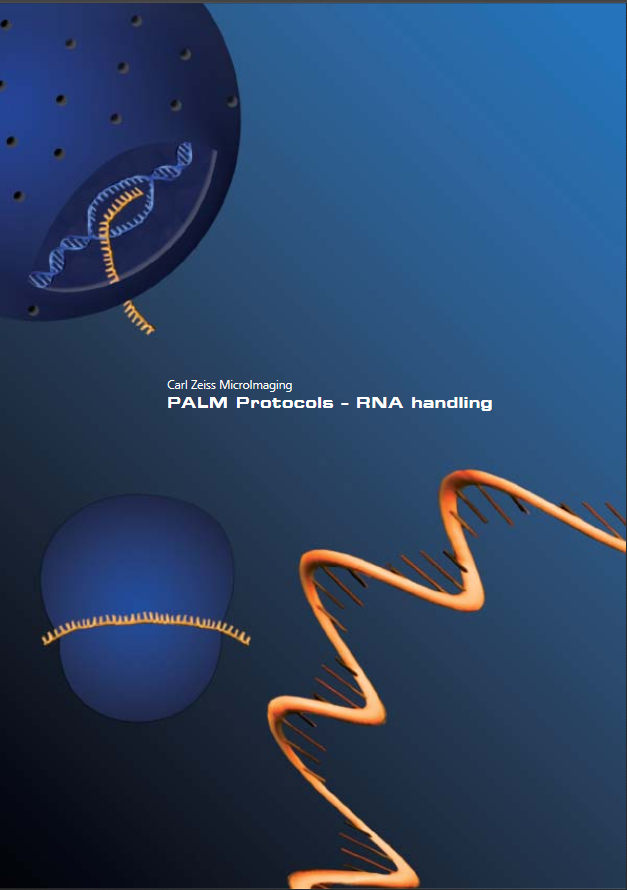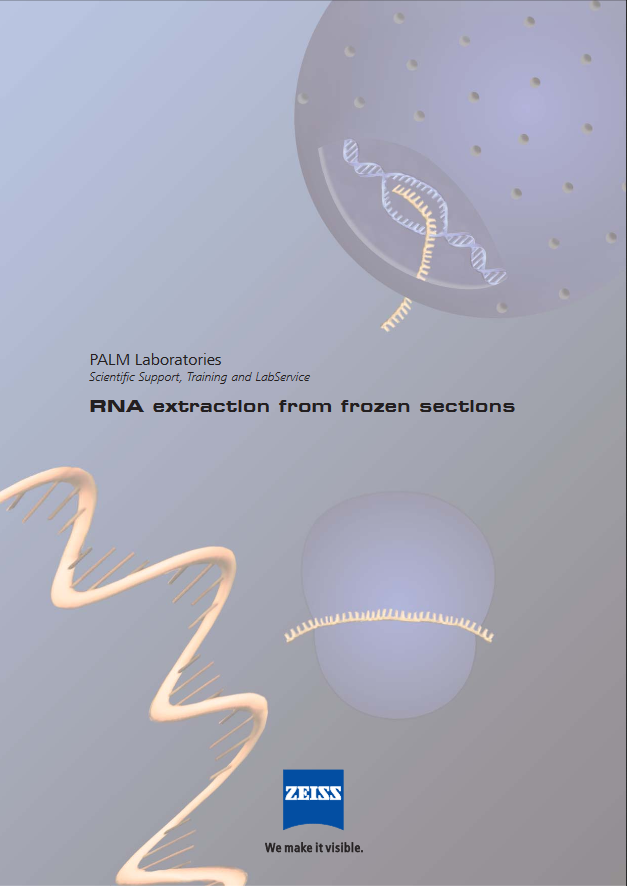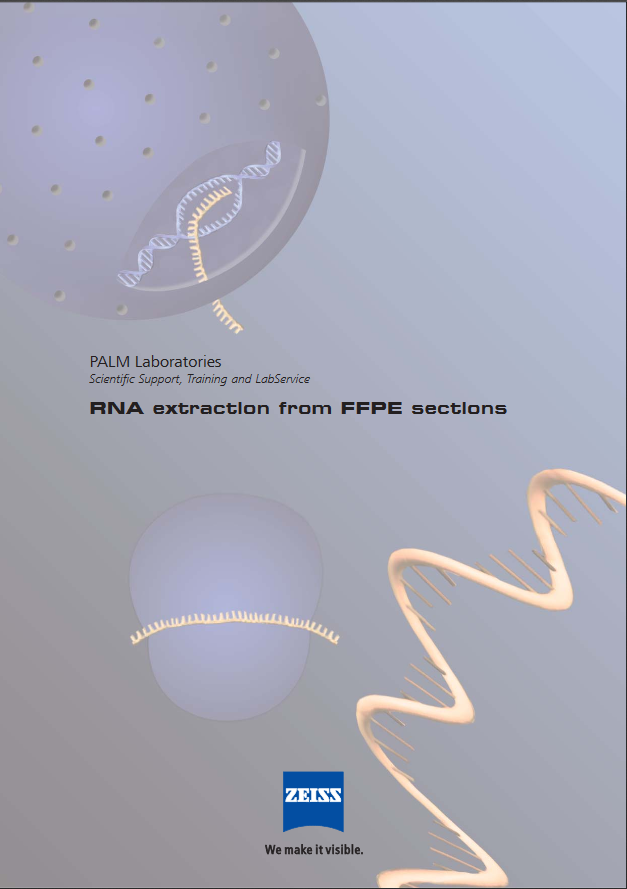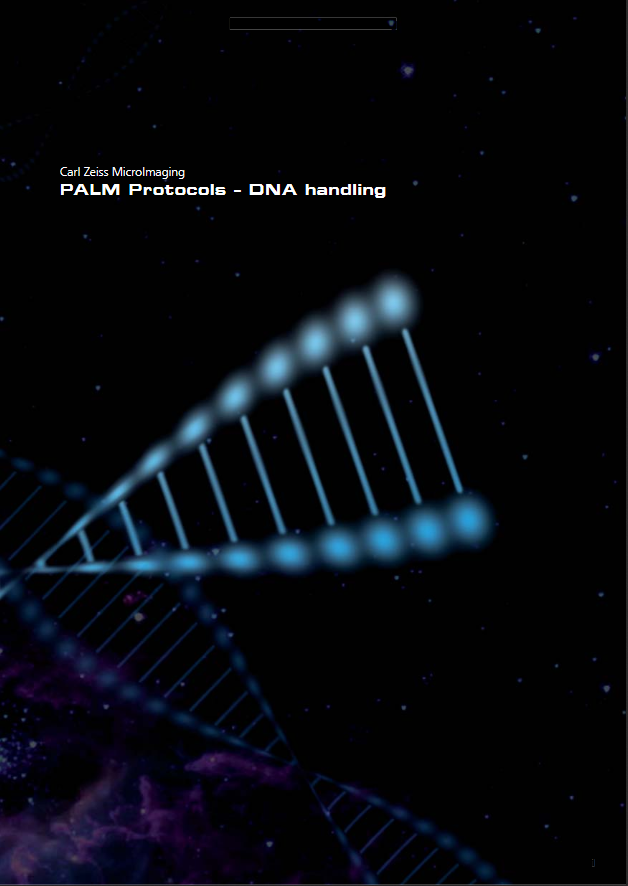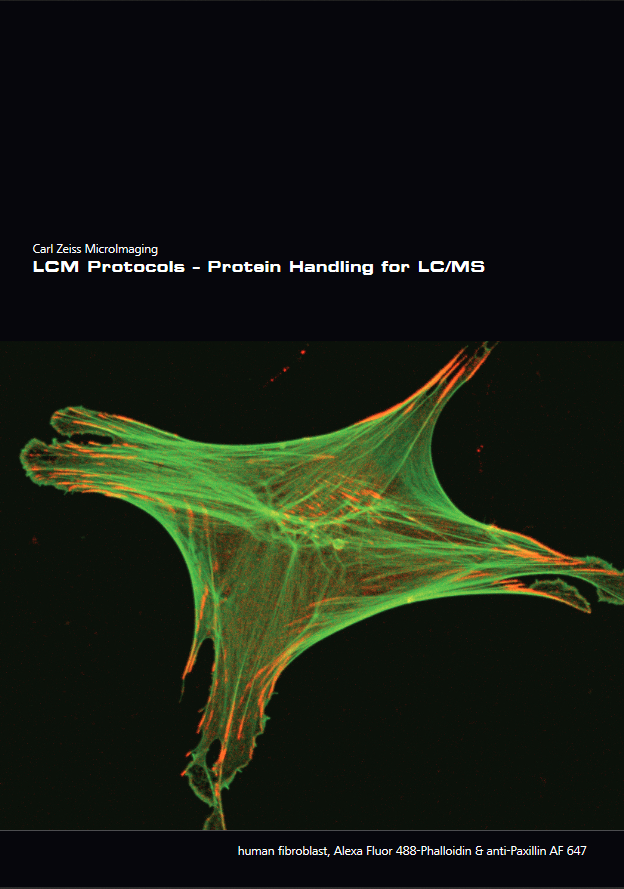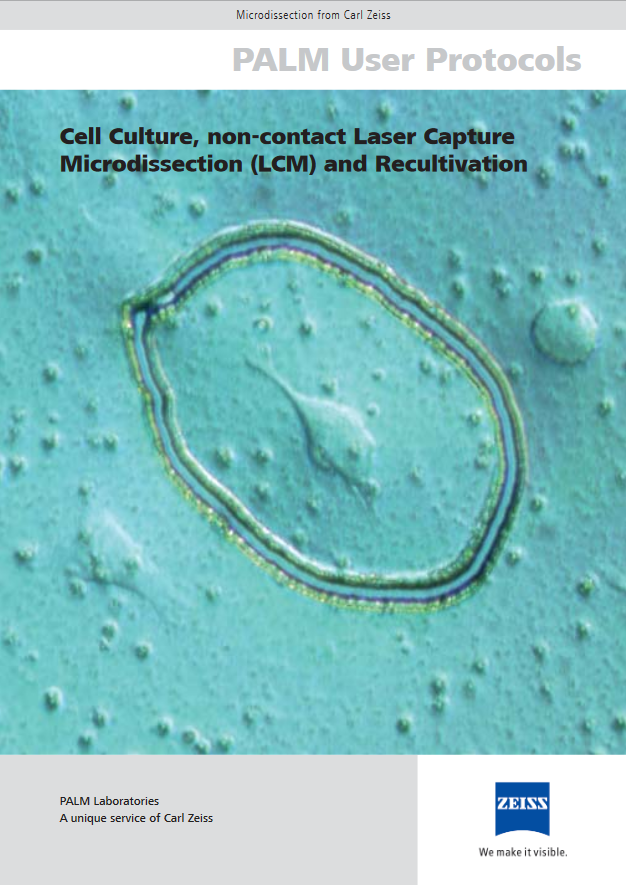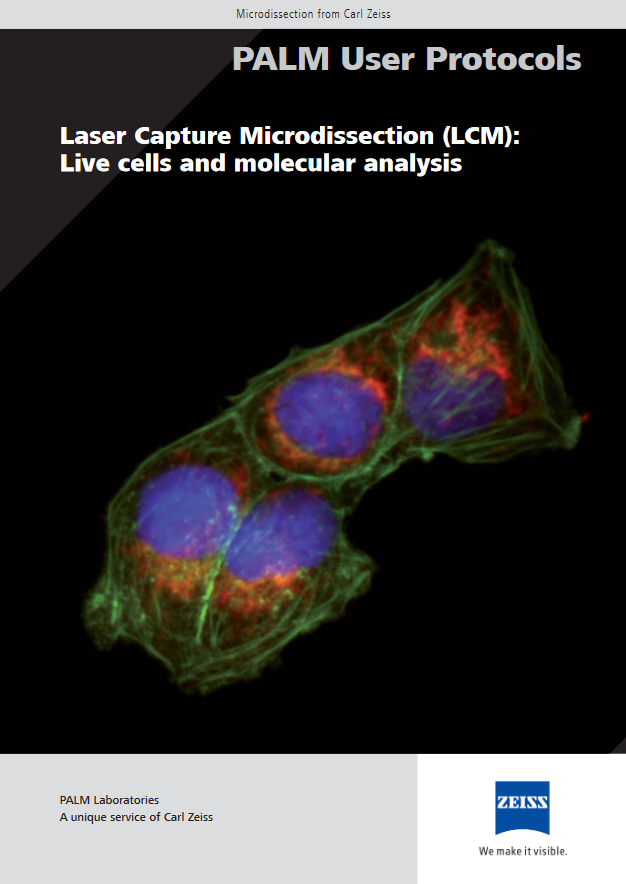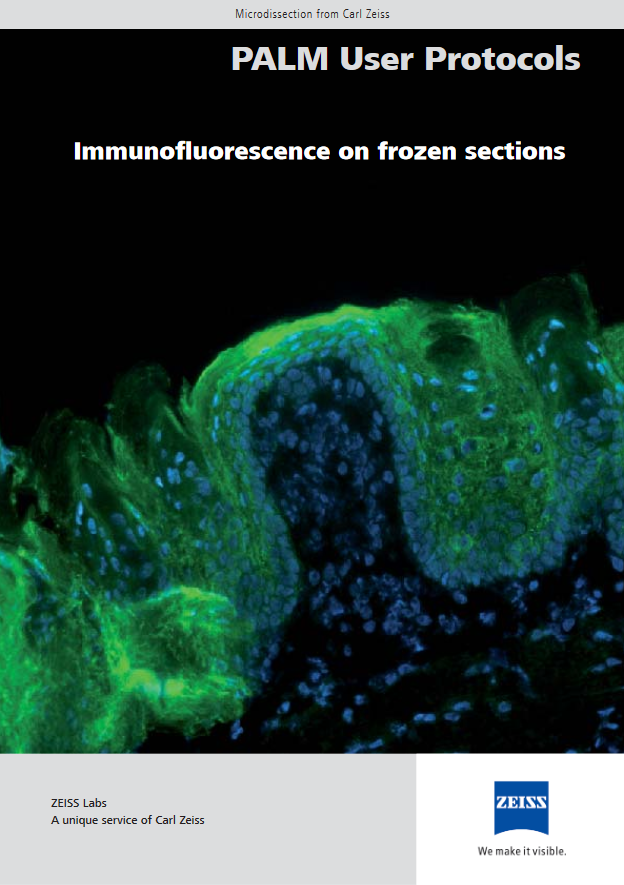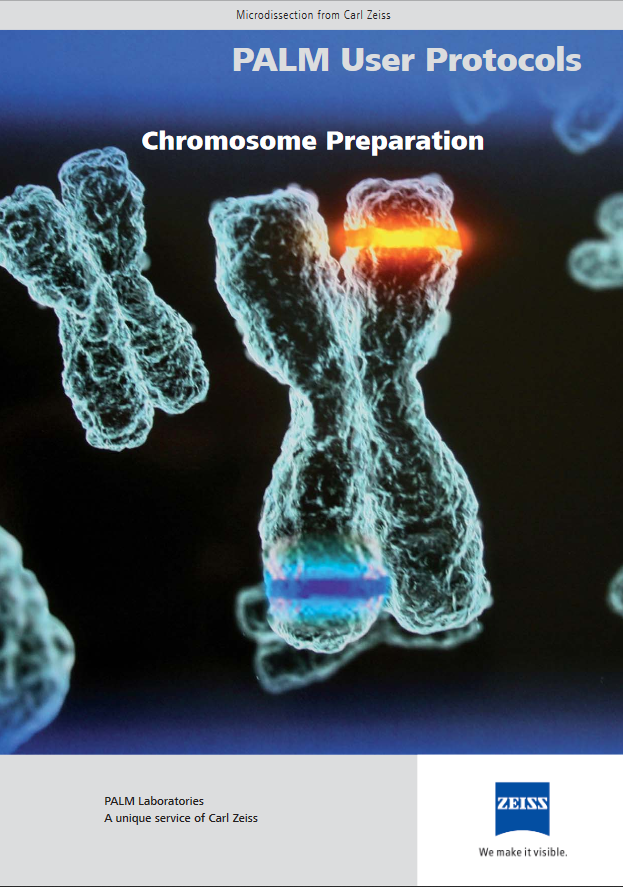
Laser Microdissection and Pressure Catapulting
Laser Microdissection and Pressure Catapulting (LMPC) is a non-contact sampling technique, especially for RNA, DNA and protein studies but also for cloning/live cell culture purposes. Microdissect a part of your specimen with a laser and catapult it into a collection device.
The Laser Microdissection and Pressure Catapulting (LMPC) technology from Carl Zeiss, which was developed by P.A.L.M., made non-contact sampling possible. The key function is the laser catapult: The specimen is microdissected by a focused laser beam with a wavelength of 355 nm, which is not absorbed by nucleic acids or proteins. Then the same laser beam is defocused and a defined, but gentle, laser pulse transports the cut piece of the specimen out of the sample plane into a collection device.
PALM MicroBeam from Carl Zeiss provides a tool in molecular analysis at DNA, RNA and protein levels, as it highly improves sampling of cell-specific tissue. In addition, it is possible to sample individual living cells or small groups of cells to be used for direct molecular
analysis or re-cultivation.
DNA
DNA research requires carefully selected source material, especially when studying individual cells, since PCR will amplify any material offered. Therefore, purest DNA is required to achieve reliable results. Cancer cells, for example, can be clearly separated from the surrounding tissue to allow contamination-free analysis and reproducible results.
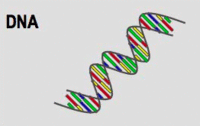
RNA
Exactly separated analytical material is also important for the study of gene expression patterns. A prerequisite for that is to dissect and collect material preserving RNA in highest integrity. The best proof for the unparalleled quality of the LMPC method: even from single cells reliable gene expression analysis is possible. For all applications, only precise collected cells or tissues can yield precise and reproducible
results.
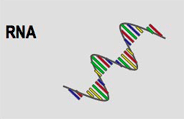
Proteins
Even in protein research, the trend is toward careful separation of individual cells or cell fractions. Cellular and tissue expressions induced by a wide
variety of factors can be determined when LMPC is used to harvest specimens at the protein level.
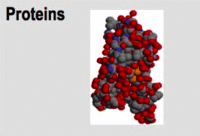
Living cells
An innovation in the field of laser microdissection is the isolation of live cells from tissue culture. You can isolate individual or small groups of cultured cells, even from primary cultures or stem cell preparations, can be used for direct molecular analysis or recultivation of single clones.

Laser microdissection and pressure catapulting combined with gene or protein analyses is useful in a wide range of research and clinical applications. The PALM® RoboMover allows this procedure in a high throughput performance by allowing up to 96 collection caps inserted at the same time. The software allows for automatic cutting-element detection and drawing through image analysis.
